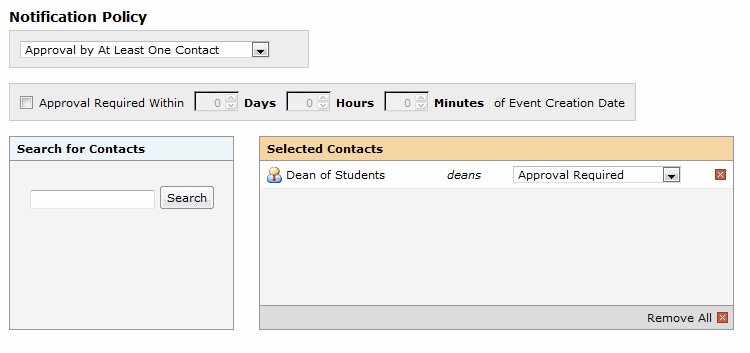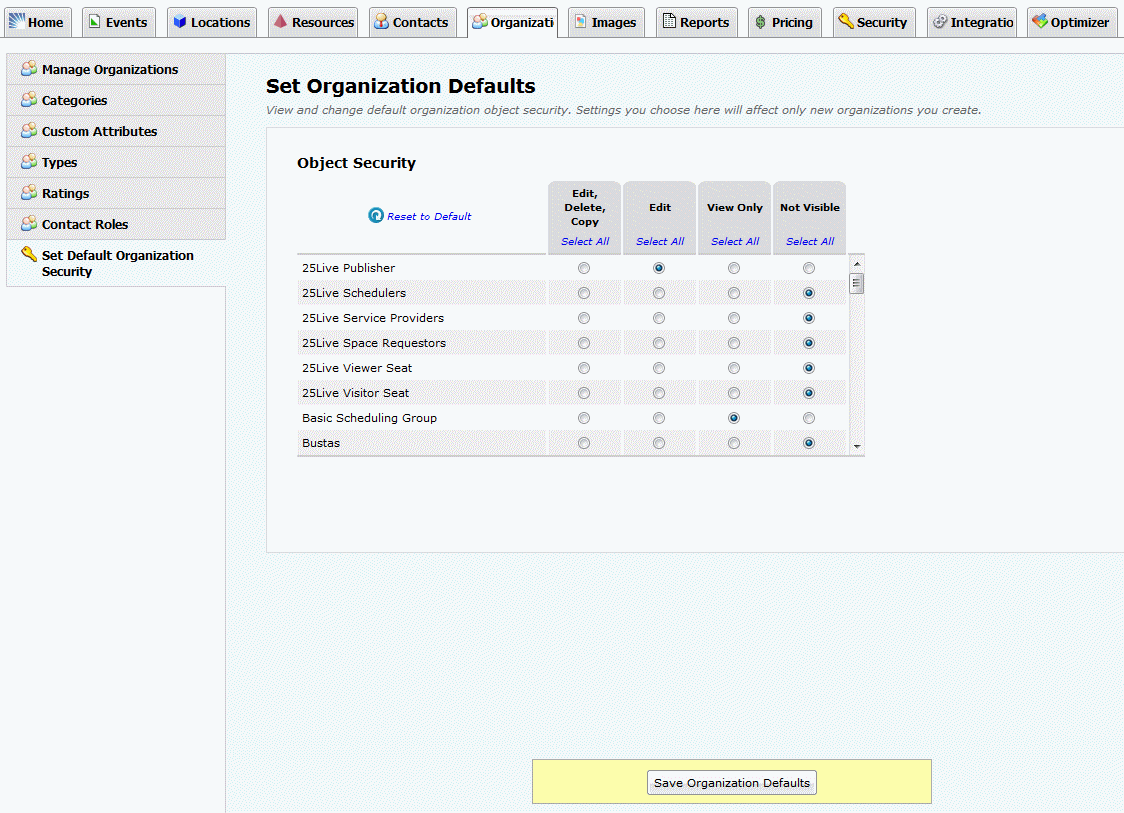Defining the object security and notification policies of organizations
Manage Organizations task tab
Use the Manage Organizations task tab to define the object security and notification policies of organizations.
Defining object security and notification policies for organizations
1. With the Manage Organizations task tab selected, click the EDIT icon.
2. Find the organization(s) whose object security and/or notification policy you want to define by simple name search, alphabetical index, type or category grouping, or saved search.
Note: Selecting “All Organizations” is not recommended because of the large amount of data that could be returned.
3. To edit selected organizations in the displayed list, highlight the organization(s) and click Edit Selected.
To edit all the organizations in the displayed list, click Edit All.
| If you choose to edit multiple organizations, be aware that all and only the changes you make will be applied to all the organizations you select for edit. When in doubt, edit organizations one at a time. |
4. Set the object security setting to the organization(s) for each of your 25Live security groups.
• If you selected one organization, click the Object Security “EDIT” link.
• If you selected multiple organizations, check the Object Security box.
5. If you want to define a notification policy for the organization(s) you selected, do the following:
• If you selected one organization, click the Notification Policy “EDIT” link.
• If you selected multiple organizations, check the Notification Policy box.
• Choose whether the notification must be approved by at least one of the users associated with the notification or all users associated with the notification.
• If you want to set a time limit within which the user(s) associated with the notification must act, check the Approval Required Within box, and set the number of days, hours, and/or minutes after the notification creation date that action must be taken.
• Perform a simple full or partial name search for a user you want to associate with the notification policy, then select the user(s) in the search results. (You can also click the Select All arrow to select all returned users.)
• If you need to run another search to find other users you want to associate with the notification policy, click the Back arrow and search again.
• For each associated user, choose the type of notification they should receive—Approval Required or Notification Only.
Note: If you need to remove one or more users you’ve associated with the notification policy, click the Remove button (red X) of each, or click Remove All to remove all associated users.
Notification policy example:
6. Click Save Changes.
| You can use the notification policy of an organization as a “template” to define the same notification policy for other organizations. To do this: • Find the organization with the notification policy you want to use as a template. • Select that organization for edit along with the other organizations you want to define a notification policy for. • Check the Notification Policy box, then choose the organization whose notification policy you wish to use as a template from the Use Template drop-down list. • Click Save Changes to apply the notification policy “template” you chose to all selected organizations. |
| Effects of functional security The Organization Access functional security access you set for a security group must be at minimum “Can View” before the related object security is applied. For information on modifying the functional security rights of security groups, see “Managing security groups” |
Defining the default object security of organizations
| Default organization object security defines the object security access permission each security group has to newly created organizations. If left unchanged for a security group, the object security system default of “Not Visible” applies, meaning that members of the group won’t see any new organizations that are created. |
Set Default Organization Security task tab
Use the Set Default Organization Security task tab to define the default organization object security for each of your 25Live security groups.
Setting organization object security defaults
1. With the Set Default Organization Security task tab selected, select the default object security setting you want for each security group.
2. Click Save Organization Defaults.

